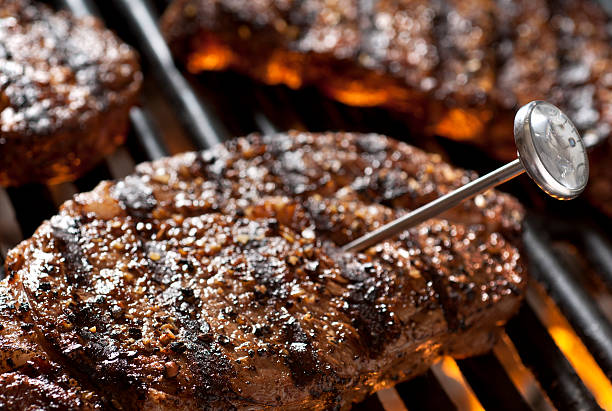Buffets have long been a popular dining choice for their variety, value, and the sheer pleasure of serving yourself as much as you desire. Whether you’re indulging in a sumptuous brunch spread, savoring international cuisine, or diving into an all-you-can-eat seafood feast, the allure of buffets is undeniable. However, with the freedom and abundance they offer, the responsibility to ensure food safety becomes paramount for restaurants.
The Buffet Appeal
Buffets are celebrated for their expansive offerings that cater to a range of tastes and preferences. From fresh salads and appetizers to hot entrées and decadent desserts, buffets have something for everyone. The self-serve style allows diners to create their own plates, choosing the dishes and quantities that appeal to their palate.
The Challenge of Buffet Food Safety
While buffets offer a delectable array of choices, they also present unique challenges for food safety. The open nature of buffet setups can expose food to a range of risks, including temperature fluctuations, cross-contamination, and the potential for uncontrolled food handling. This makes it crucial for restaurants to implement stringent measures to protect their guests from foodborne illnesses.
Staff Training
The first line of defense in maintaining food safety in buffets is a well-trained staff. Restaurant employees are educated about proper food handling techniques, hygiene practices, and the importance of vigilance in buffet settings. They are regularly updated on food safety protocols and are responsible for monitoring the buffet line.
Frequent Food Temperature Checks
Buffets are particularly susceptible to temperature fluctuations, which can lead to the rapid growth of bacteria in perishable foods. To combat this, restaurants employ a system of frequent temperature checks. Hot food items must be maintained at safe temperatures to prevent bacterial growth, while cold items should be kept chilled.
Sneezeguard Protectors
Sneezeguards are a common sight in buffet setups. These transparent barriers serve a dual purpose: they protect the food from airborne contaminants and discourage diners from reaching directly into the dishes. The presence of sneezeguards is a simple yet effective measure in upholding food safety.
Hygiene Stations
Restaurants often place hand sanitizer stations near the buffet area, encouraging diners to clean their hands before serving themselves. This minimizes the risk of contamination and reinforces the importance of hand hygiene.
Frequent Utensil Replacement
Buffet utensils, such as tongs and spoons, are regularly replaced to ensure they remain clean and sanitary. Restaurant staff are trained to monitor and refresh utensils as needed.
Diner Education
Promoting awareness among diners is another crucial aspect of maintaining food safety in buffets. Restaurants often display signs with guidelines for safe dining practices, reminding patrons to use utensils, respect sneezeguards, and maintain proper hygiene.
Continuous Monitoring
Restaurant staff continuously monitor the buffet area throughout service hours. This includes checking food temperatures, replenishing items as needed, and ensuring that the buffet line remains clean and inviting.
Limited Time on Display
To minimize the time that food is exposed on the buffet line, restaurants often replenish dishes in small, manageable quantities. This prevents items from sitting out for extended periods and helps maintain food quality.
Regular Food Rotation
Food safety practices also involve the regular rotation of items on the buffet. Older dishes are replaced with freshly prepared ones to maintain quality and safety standards.
Action Plans
In the event of a spill or contamination incident, restaurants have clear action plans in place. This allows them to swiftly respond to potential issues, ensuring the safety of all diners.
Quality Ingredients
The foundation of food safety begins with the quality of ingredients used in buffet dishes. Restaurants source their ingredients from reputable suppliers and conduct thorough quality checks to guarantee freshness and safety.
Local Health Inspections
Restaurants are subject to regular health inspections by local authorities. These inspections evaluate a range of factors, including kitchen cleanliness, staff hygiene, and food safety practices. Non-compliance with health regulations can result in penalties or even closure.
Buffet Alternatives
Some restaurants are adopting buffet alternatives to enhance food safety. These options include live cooking stations, where chefs prepare dishes to order, minimizing the risks associated with self-service.
A Shared Responsibility
Ultimately, food safety in buffets is a shared responsibility. While restaurants are tasked with implementing and upholding strict safety measures, diners also play a crucial role in maintaining a safe dining environment. By adhering to restaurant guidelines, using utensils, and practicing good hand hygiene, diners contribute to the overall safety of the buffet experience.
Conclusion
Buffets offer a tantalizing array of culinary delights, but they come with a responsibility to ensure the safety of diners. Restaurants, in partnership with well-trained staff and informed patrons, work diligently to maintain food safety standards. By implementing a range of measures, from temperature checks to hygiene stations, they strive to create a secure and enjoyable dining experience.
